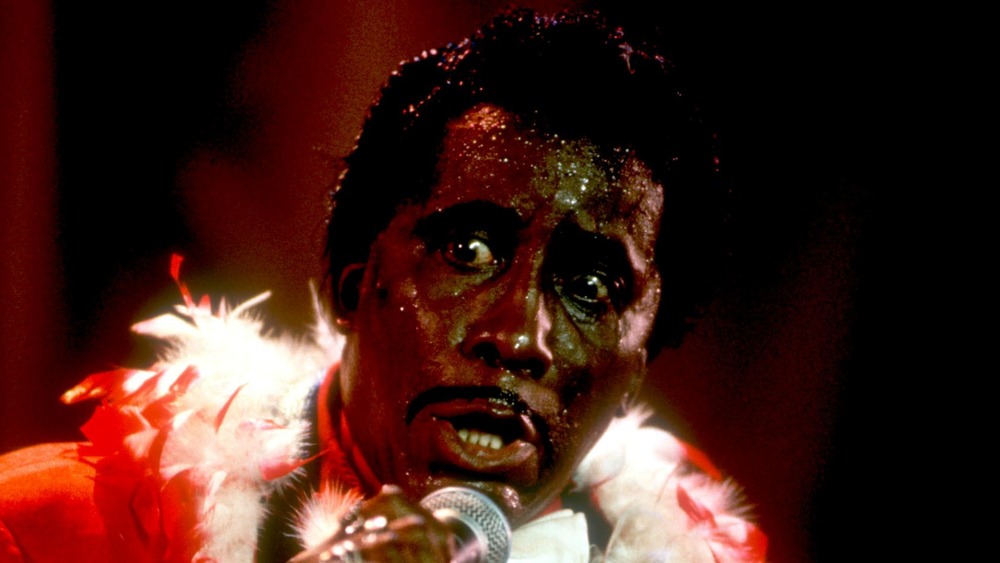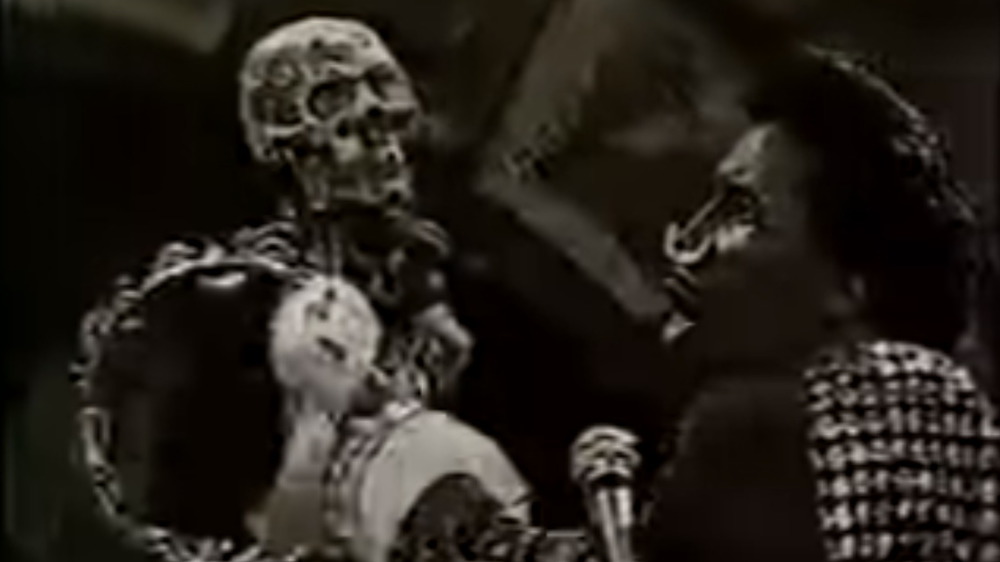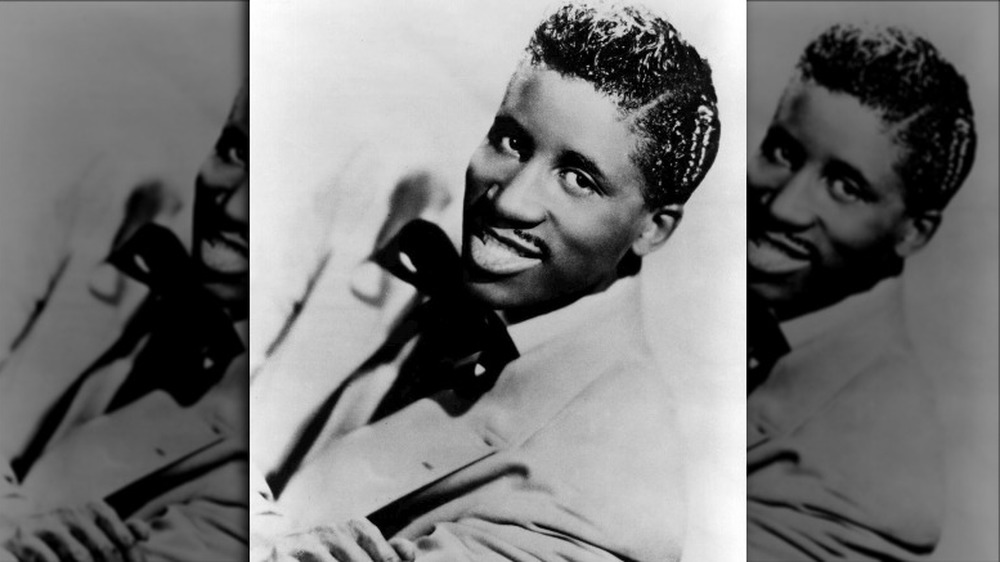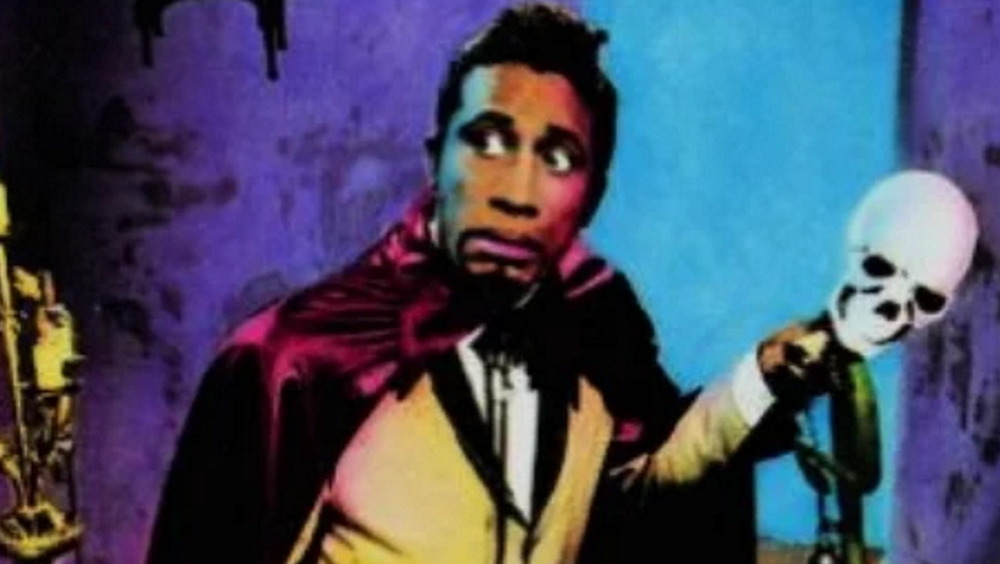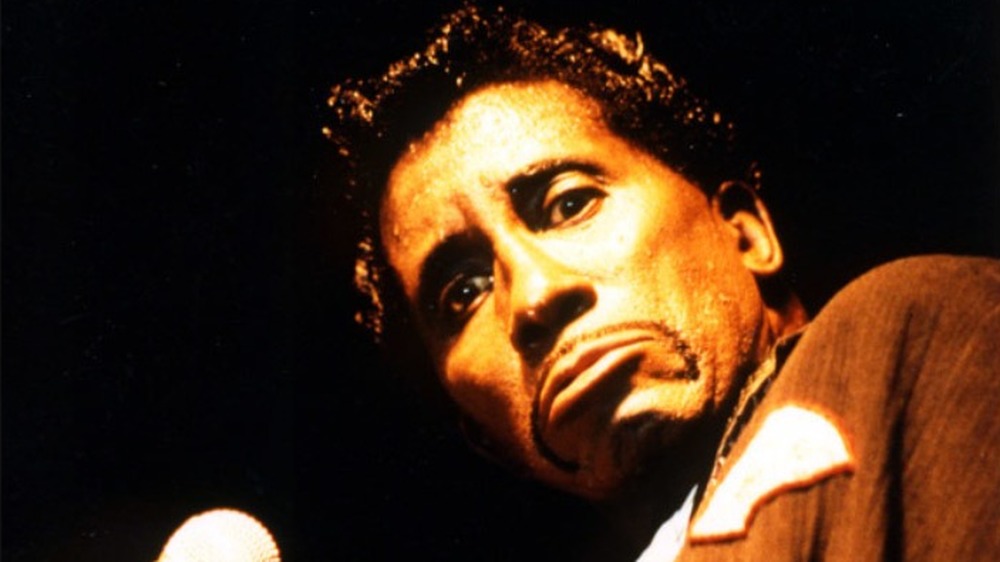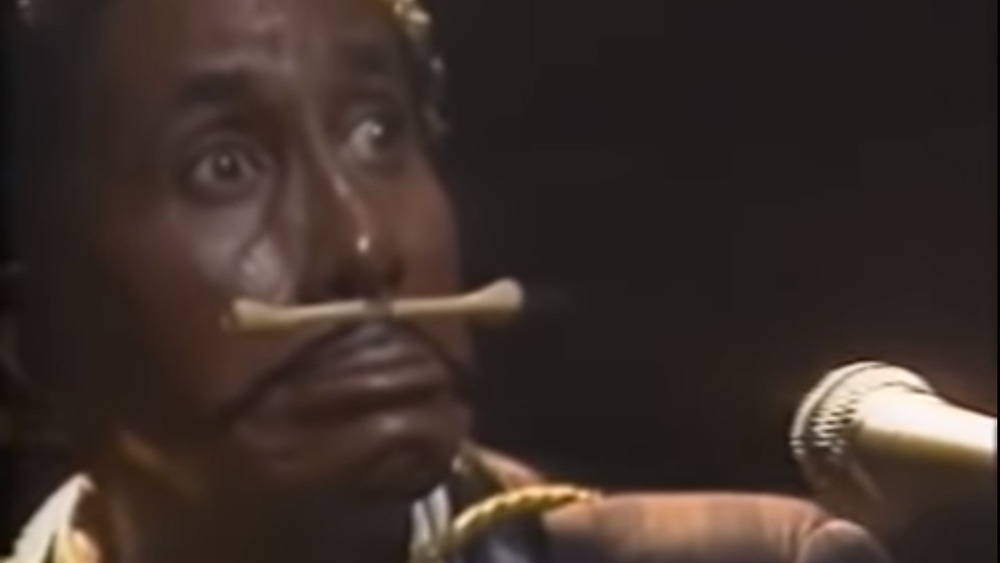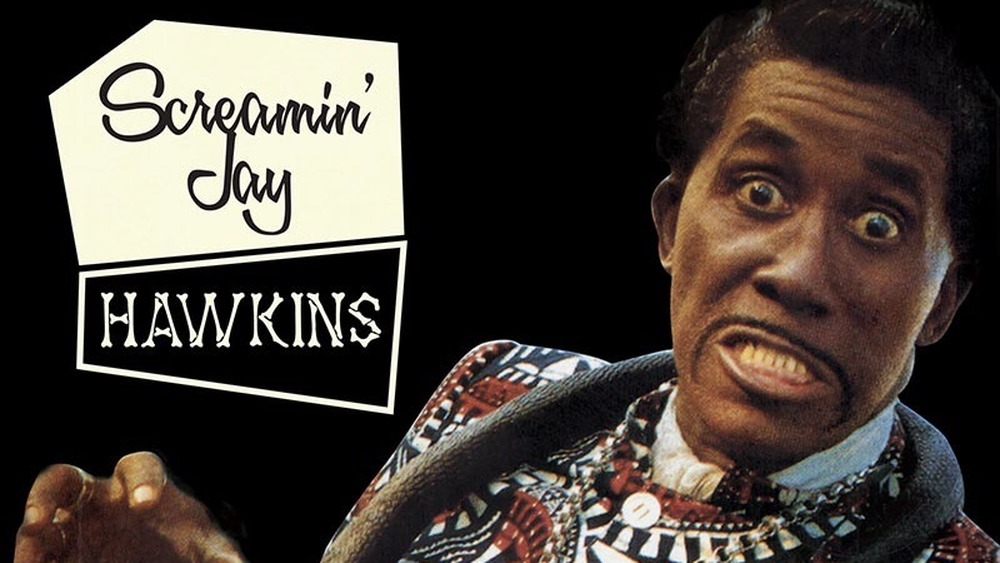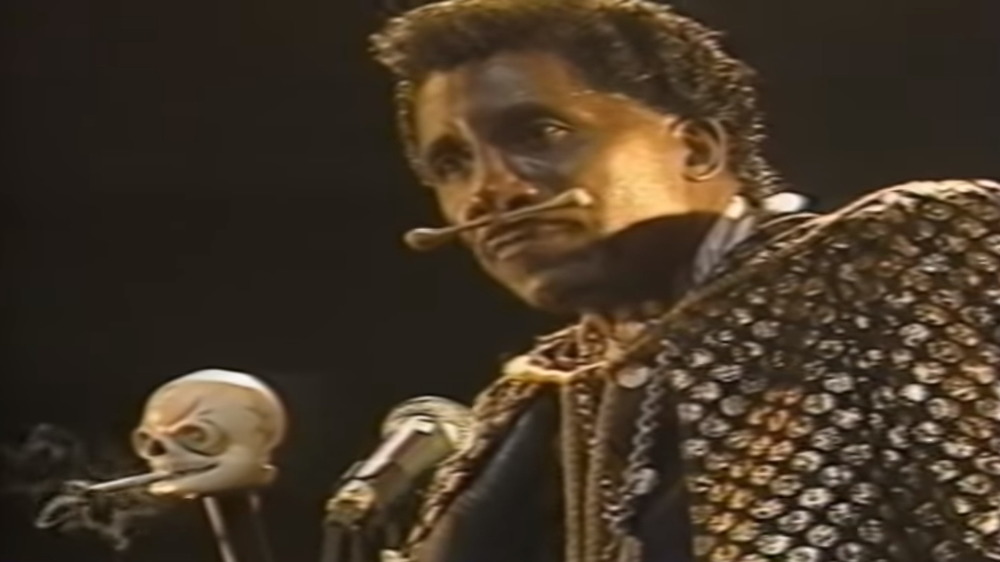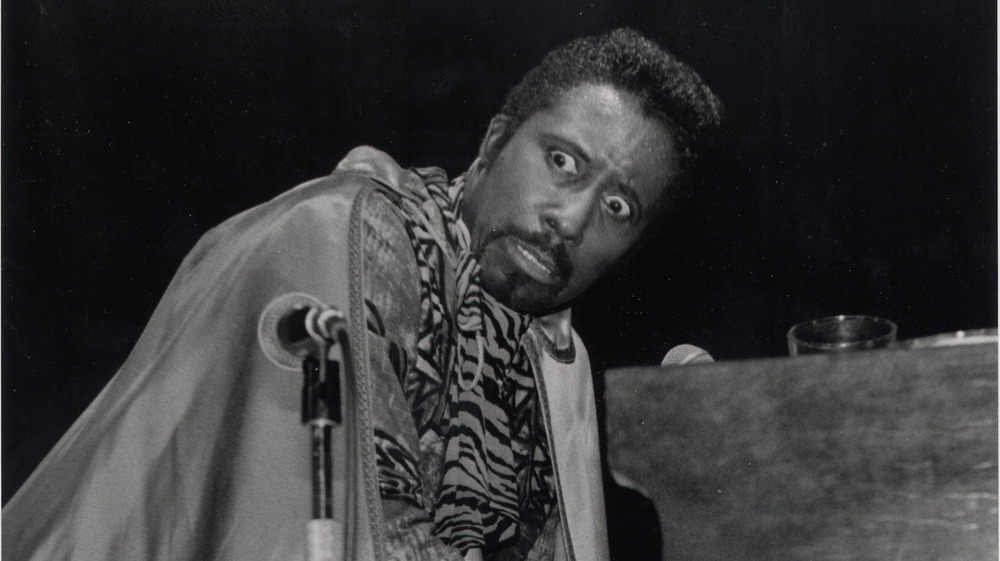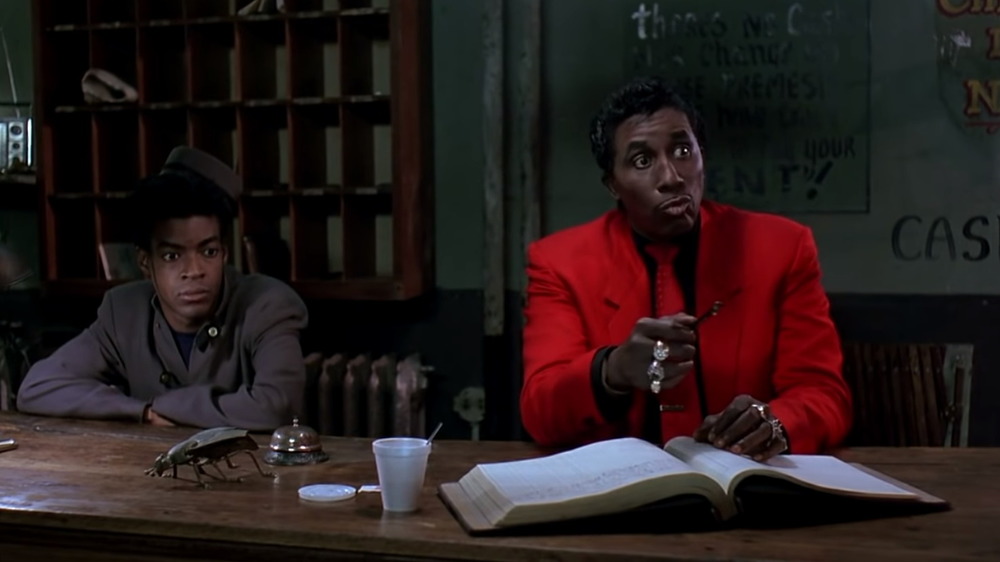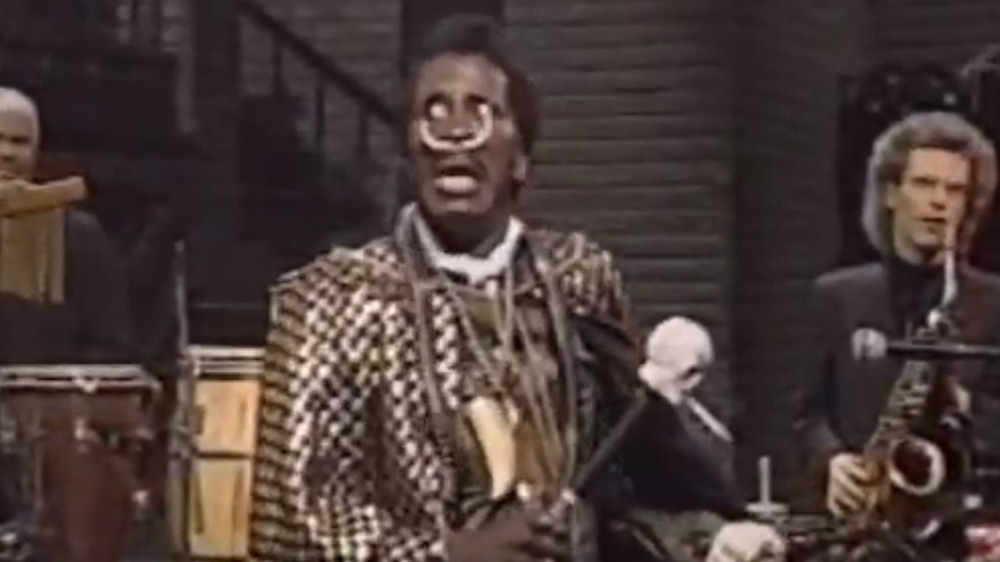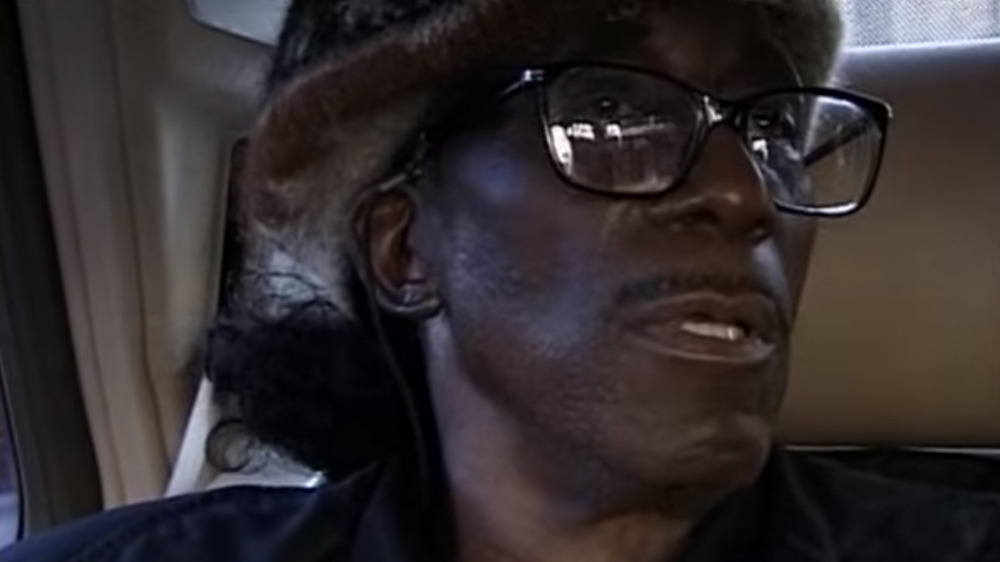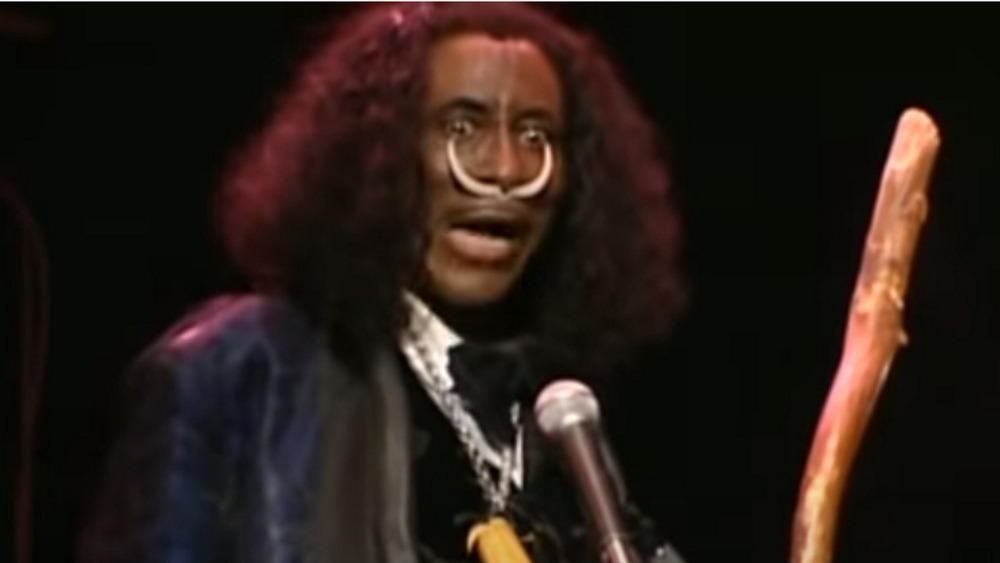The Crazy Real-Life Story Of Screamin' Jay Hawkins, Music's First Shock Rocker
In the early 1970s, Alice Cooper shocked the world with his wild stage shows. Combining hard-hitting rock 'n' roll with a Grand Guignol aesthetic unseen outside of horror movies, Cooper's concerts featured snakes, dancing skeletons, and the nightly execution of the singer by guillotine. Although kids loved it, parents saw Cooper as evidence of the downfall of Western civilization. A few years later, KISS would take up Cooper's mantle with their live spectacles of blood and fire. Naturally, the older generation was again outraged. As the '70s ended, horror imagery and theatricality infiltrated the already controversial punk scene when The Misfits adopted a combination of monster movie camp and violence as a musical and stylistic ethos.
By the 1990s, the term "shock rock" had become a catch-all label for bands and musicians who incorporated dark imagery and themes in their music and concerts. From the hot-rods-and-monsters groove of White Zombie to the depressive grind and apocalyptic overtones of Marilyn Manson, the impact of music blended with horror-infused theatricality was undeniable. The success of bands such as Slipknot and Ghost are testaments to shock rock's continued viability just as the continuing popularity of stalwarts such as GWAR and the aforementioned Alice Cooper prove its longevity.
However, long before Alice Cooper, another performer rose from his coffin to put a spell on music fans with a macabre stage show that thrilled audiences of the 1950s. This is the true story of Screamin' Jay Hawkins, shock rock pioneer.
A foster family saved Screamin' Jay Hawkins from poverty
Born Jalacy J. Hawkins in Cleveland, Ohio, on July 18, 1929, Screamin' Jay Hawkins had a lifelong penchant for the grandiose and never shied from a little personal mythmaking. Consequently, much of Hawkins' life prior to fame is shrouded in mystery. A cursory look at available sources reveals much contradictory information, often stemming from Hawkins himself.
Speaking of his early life, Hawkins told The Independent that he was one of eight children, a number that varies by interview. However, Steve Bergsman, author of the definitive Hawkins biography I Put a Spell on You: The Bizarre Life of Screamin' Jay Hawkins, reveals that he was one of four children. Destitute, his mother, Marie Hawkins, placed him in a welfare home soon after he was born. Although Hawkins maintained that he was taken in by a tribe of wealthy Blackfoot Native Americans, he was actually fostered by Edith Randolph, a woman whom Hawkins' oldest daughter Sookie remembered as possibly being Native American. Despite Hawkins' resentment of his birth mother, Marie Hawkins remained a presence in his life and in the lives of his children.
Although Hawkins' claims that he was a musical prodigy who learned piano as a toddler and could read music by six are dubious, he did grow up loving classical music and opera and often declared his love for singer Paul Robeson. According to Bergsman, Hawkins told an interviewer that he quit classical piano lessons at 12 because he wanted to play blues and jazz in the style of Big Bill Broonzy.
Screamin' Jay Hawkins' military service
As revealed in I Put a Spell on You, Hawkins' military record is festooned with half-truths and outright falsehoods. One oft-repeated tale is that the singer dropped out of school at 14 and falsified his birth certificate to enlist in the Army during World War II. The story is true in that Hawkins did lie about his age to enlist. He was, however, 16, not 14.
In the 2001 documentary Screamin' Jay Hawkins: I Put a Spell on Me, Hawkins told filmmaker Nicholas Triandafyllidis of his experiences in the Pacific theater. "I was a young dude, but I did a lot of killing. I enjoyed it," Hawkins said. "It was beautiful to me to be able to take a life knowing I don't have to go to jail." Hawkins then regaled Triandafyllidis with a harrowing tale of the eight months he spent in a Japanese prison camp, climaxing with the singer taking bloody revenge on his captors. However, as detailed by biographer Steve Bergsman, official records show that Hawkins enlisted in December 1945, three months after the war's end. Hawkins used his gifts as a musician as a member of the Army-Air Force's Special Services Division. Hawkins often repeated these stories to band members and friends. "It didn't make any difference how close you were to Jay," Bergsman writes. "You got the same bullsh*t as everyone else."
Although Hawkins never saw combat in either World War II or Korea, he nonetheless served with honor and was discharged in 1952.
Screamin' Jay Hawkins' dubious career as a boxer
Aside from music, Jalacy Hawkins' great passion was boxing. Powerfully built and long-limbed, Hawkins was no doubt a formidable opponent in the ring. According to Case Western Reserve University's Encyclopedia of Cleveland History, Hawkins got his start in the sport while in the military as part of the Army's boxing circuit.
However, like many aspects of Hawkins' life before fame, his boxing career suffers from an immense lack of verifiable facts. Ultimately, Hawkins' participation in the sport, like his military record, was subject to the singer's love of a good yarn. In the 1984 book Nowhere to Run: The Story of Soul Music, author Gerri Hershey, perhaps caught in Hawkins' storytelling spell, claims that the performer was the Golden Gloves middleweight champ of 1947. However, the Golden Gloves middleweight title went to Chicago's Nick Ranieri that year. As detailed in I Put a Spell on You: The Bizarre Life of Screamin' Jay Hawkins, there are no records of any fighter named Jalacy J. Hawkins winning a Golden Gloves championship in 1947.
Hawkins' claim that he defeated Billy McCann to win the Alaskan middleweight title in 1947 is also dubious at best. McCann, a welterweight, retired from boxing in 1944.
Screamin' Jay Hawkins becomes a professional musician
Hawkins began playing music at Cleveland-area clubs in 1951, getting his start at Gleason's Bar and the Majestic Hotel. Based on accounts from Hawkins' daughter, Sookie, as related to biographer Steve Bergsman, the Majestic's bar, known in the 1950s as the Rose Room Cocktail Lounge, was especially important to Hawkins' formative years. Located in a predominantly Black area referred to as Cleveland's Harlem, the lounge attracted both African Americans and a young, white audience.
In 1952, Hawkins landed a steady gig as a piano player and vocalist in famed jazz guitarist Tiny Grimes' band the Rocking Highlanders. According to Contemporary Black Biography, Hawkins also served as Grimes' chauffeur. Now a full-time, touring musician, Hawkins often took his wife Anna Mae and daughter Sookie on the road with him, but as his career with the band progressed, he spent more and more time away from his family, and his life as a professional musician took a toll on his marriage.
In live performances, Hawkins drove audiences wild with his raucous approach to blues and jazz. At a gig in West Virginia, an especially enthusiastic fan shouted, "Scream, baby, scream!" From that night forward, Jalacy Hawkins would be known as Screamin' Jay Hawkins.
While with Grimes, Hawkins recorded the plaintive blues tune "Why Did You Waste My Time," which showcased his powerful baritone voice. The song paved the way for Hawkins' solo career. After a brief stint with Fats Domino, he signed with OKeh Records in 1955.
Hawkins' insistence on originality led to conflict
A true original even before he began incorporating the horror elements that would make him famous into his show, Screamin' Jay Hawkins was determined to be his own man. An iconoclast with little regard for trends, Hawkins frequently clashed with producers and other musicians. In 1954, Hawkins joined Fats Domino's band. The pairing proved disastrous. Domino's characteristically laid-back approach just didn't mesh with Hawkins' big, bold, bluesy shout. Nevertheless, it was Hawkins' sartorial choices that led to his ouster from Domino's band. According to Contemporary Black Biography, the "Blueberry Hill" singer fired Hawkins after he showed up for a performance in a leopard-skin suit.
Ironically, Domino figured in an earlier altercation in which Hawkins nearly came to blows with a legendary music producer and record executive. As documented in Nowhere to Run, Hawkins was delivering a typically wild vocal performance during a 1953 Tiny Grimes recording session when producer Ahmet Ertegun gently suggested that he tone the song, a Hawkins composition titled "Screamin' Blues," down a bit and sing it more like Fats Domino. "Why don't you go and get Fats Domino?" Hawkins shouted. A further suggestion to calm down was the last straw. Hawkins bellowed "Go to hell!" at Ertegun, and, by some accounts, the imposing bluesman attempted to punch out the comparatively diminutive producer. "Screamin' Blues" was never released. Soon after the disastrous recording session, Hawkins exited the Rocking Highlanders.
Hawkins strikes gold with "I Put a Spell on You"
In 1955, Screamin' Jay Hawkins recorded his signature song, "I Put a Spell on You." Originally conceived and produced as a straightforward blues ballad, this version of Hawkins' dark ode to unrequited love went largely unnoticed. His second attempt at the song in 1956, however, would make him a star and the song a rock 'n' roll standard.
Ever the showman, Hawkins had several versions of the story behind "I Put a Spell on You," which varied by audience but all centered on heartbreak. The origin story he told Nowhere to Run author Gerri Hirshey centers on a 1954 performance at Herman's Bar in Atlantic City. After the gig, Hawkins returned home to find his girlfriend had left him. Distraught, Hawkins let loose a single heart-rending scream and wrote the song on the spot.
The second version of "I Put a Spell on You" came at the urging of Columbia Records executive Arnold Matson, who suggested Hawkins do "something different" with the song. To that end, he brought in some refreshments for the band. "So, [Matson] brought in a case of Italian Swiss Colony Muscatel, and we all got our heads bent [...] We all got blind drunk," Hawkins told Nick Tosches, author of Unsung Heroes of Rock 'n' Roll. "Ten days later, the record came out. [...] I heard all those drunken screams and groans and yells. I thought, 'Oh, my God!'"
Voodoo, coffins, and a skull named Henry
When pioneering rock 'n' roll DJ Alan Freed played "I Put a Spell on You" on his radio show, it became an instant underground favorite. Entranced by Hawkins' haunting and seemingly diabolical vocal stylings, an audience of mostly white teenagers made the off-kilter love song a hit.
Before the mainstream got a glimpse of Screamin' Jay Hawkins, he had already established a reputation as a dangerous wild man thanks to his hit song. As detailed in Nick Tosches' Unsung Heroes of Rock 'n' Roll, critics and moral gatekeepers interpreted "I Put a Spell on You" as being about everything from cannibalism to rape. Consequently, many radio stations refused to play it.
On the strength of Hawkins' cult hit, Alan Freed added the singer to his travelling Rock 'n' Roll Revue. Encouraging Hawkins to amp up the horror movie vibe of his performances, Freed suggested that Hawkins rise from a coffin at the beginning of his set. At first reluctant, Hawkins relented when Freed paid him $2,000 extra for the stunt.
Onstage, Hawkins played the role of a witch doctor to the hilt. Incorporating rubber snakes, skeletons, pyrotechnics, and a cigarette-smoking skull on a stick, affectionately dubbed "Henry," into his concerts, Hawkins, clad in a black cape, wild eyed, and growling like a madman, soon gained a reputation as rock music's answer to Boris Karloff. Like Alice Cooper and Marilyn Manson after him, Hawkins' shows were picketed by offended citizens for being in poor taste.
Screamin' Jay Hawkins in decline
As detailed in Nowhere to Run, Hawkins spent much of the 1960s mired in paranoia and alcohol. Angered by institutionalized racism in the music industry, Hawkins began to believe that there was a conspiracy afoot to keep his music off the airwaves. While Hawkins struggled to get a foothold on the charts, artists such as Nina Simone and Creedence Clearwater Revival were finding success with covers of Hawkins' hit. "I got fed up. I went to Honolulu for ten years because I figured the world wasn't ready for me," Hawkins told music journalist Nick Tosches, "In the meantime all these people are recording my goddamn stuff. [...] I get the impression that everybody's going places with what I was doing fifteen goddamn years ago. Everybody but me..."
"There was money being generated by 'I Put a Spell on You,' but Jay wasn't getting any of it," record producer Milan Melvin told filmmaker Nicholas Triandafyllidis. "Jay told me that when he asked for his own royalty money he was told that Black people don't get royalty money. They just take what's given to them without asking." Convinced that the record industry was controlled by the mob, Hawkins says he was told to disappear or be killed.
Hawkins' disgust with racism nearly drove him out of music and would be instrumental in his decision to leave the United States late in life. "America wants to be able to control her Blacks," Hawkins said. "If they can't control you, then they'll destroy you."
Jim Jarmusch helped Hawkins get back on his feet
Acclaimed indie filmmaker Jim Jarmusch, known for his quirky, deadpan directing style in such movies as Down by Law, is a lifelong fan of Screamin' Jay Hawkins. In the documentary film I Put a Spell on Me, Jarmusch spoke of his admiration of Hawkins. "Wow. What a strong man to go through all the sh*t that he went through," Jarmusch said. "To me he was like a national treasure. He was like really something so valuable in our culture."
Jarmusch also recalled being taken aback by the power of "I Put a Spell on You": "The first time I ever heard it, I remember, was on a really small transistor radio late at night in my room and it ... haunted me."
Jarmusch would use the song as a recurring motif in his 1984 film Stranger Than Paradise. Discovering that Hawkins had no rights to the song that was so integral to his film, Jarmusch decided to track the singer down and make sure he received fair compensation and more. "We found him, and he was living in a trailer in New Jersey. And he had no phone," Jarmusch recalled. The director would go on to cast Hawkins in his 1989 anthology film Mystery Train.
The many loves of Screamin' Jay Hawkins
A notorious ladies' man, Screamin' Jay Hawkins' love life was nearly as wild and unhinged as his infamous stage show. Hawkins was married six times and indulged in countless romantic dalliances and extramarital affairs over the course of his career as a professional musician.
According to Steve Bergsman's I Put a Spell on You: The Bizarre Life of Screamin' Jay Hawkins, the performer never formally divorced his first wife, Anna Mae. Disappearing from the family for two years, he returned home a success, driving a pink Cadillac. The celebratory mood would fade when Hawkins again left.
On occasion, Hawkins' relationships would take a turn into dangerous territory. An open relationship with singer Shoutin' Pat Newborn nearly got Hawkins killed. Demanding "exclusivity" with some of the couples' trysting partners, an angry Newborn allegedly shot Hawkins when he made a solo move on one of her chosen ladies.
After moving to Europe in the 1990s, Hawkins married his last wife, Monique, a French woman of African descent. The pair remained together until Hawkins' death in 2000.
Screamin' Jay Hawkins' final years in France
Screamin' Jay Hawkins spent his final years living in France. Long revered and celebrated in Europe, Hawkins continued to perform at Paris' Maxwell Cafe three or four times a month until his death.
In 2000, Hawkins appeared to be in good health. Still lean and robust, the 70-year-old had the appearance of a man 20 years younger. In previous decades, Hawkins lamented being pigeonholed as a "black Vincent Price," having once told writer Gerri Hirshey, "I wish I could be who I was before I was me," but, as he entered his seventh decade, he made peace with being rock's original wild man. "I find I can make people react more quickly if I walk on with a skull and snakes," Hawkins told The Independent's Philip Sweeney. "I see smiles on their faces and they're clappin' and sayin' here come the crazy man and I know it's gonna be alright."
On February 12, 2000, Jalacy J. Hawkins suffered an aneurysm and died of multiple organ failure following emergency surgery.
The legacy of Screamin' Jay Hawkins
Screamin' Jay Hawkins' influence as the grandfather of shock rock is undeniable. From the horrific stage shows of Alice Cooper to the squeals and groans of the Cramps' late frontman Lux Interior, Hawkins provided the blueprint for every band who incorporated macabre theatricality in their music. Yet, it would be a mistake to overlook Hawkins' skills as a songwriter. Included in the Rock and Roll Hall of Fame's "500 Songs that Shaped Rock," "I Put a Spell on You" is one of the most covered songs of all time. With renditions performed by artists as varied as Creedence Clearwater Revival, MC5, Bette Midler, and Joss Stone, the song has become a classic.
Hawkins also left behind an incredible living legacy of an estimated 57 to 75 children. The blues shouter's life on the road made him one of the most prolific fathers in music history. As reported by NPR, Hawkins biographer Maral Nigolian created the website JaysKids.com to track the singer's offspring. Nigolian eventually located 33 of Screamin' Jay Hawkins' children.
